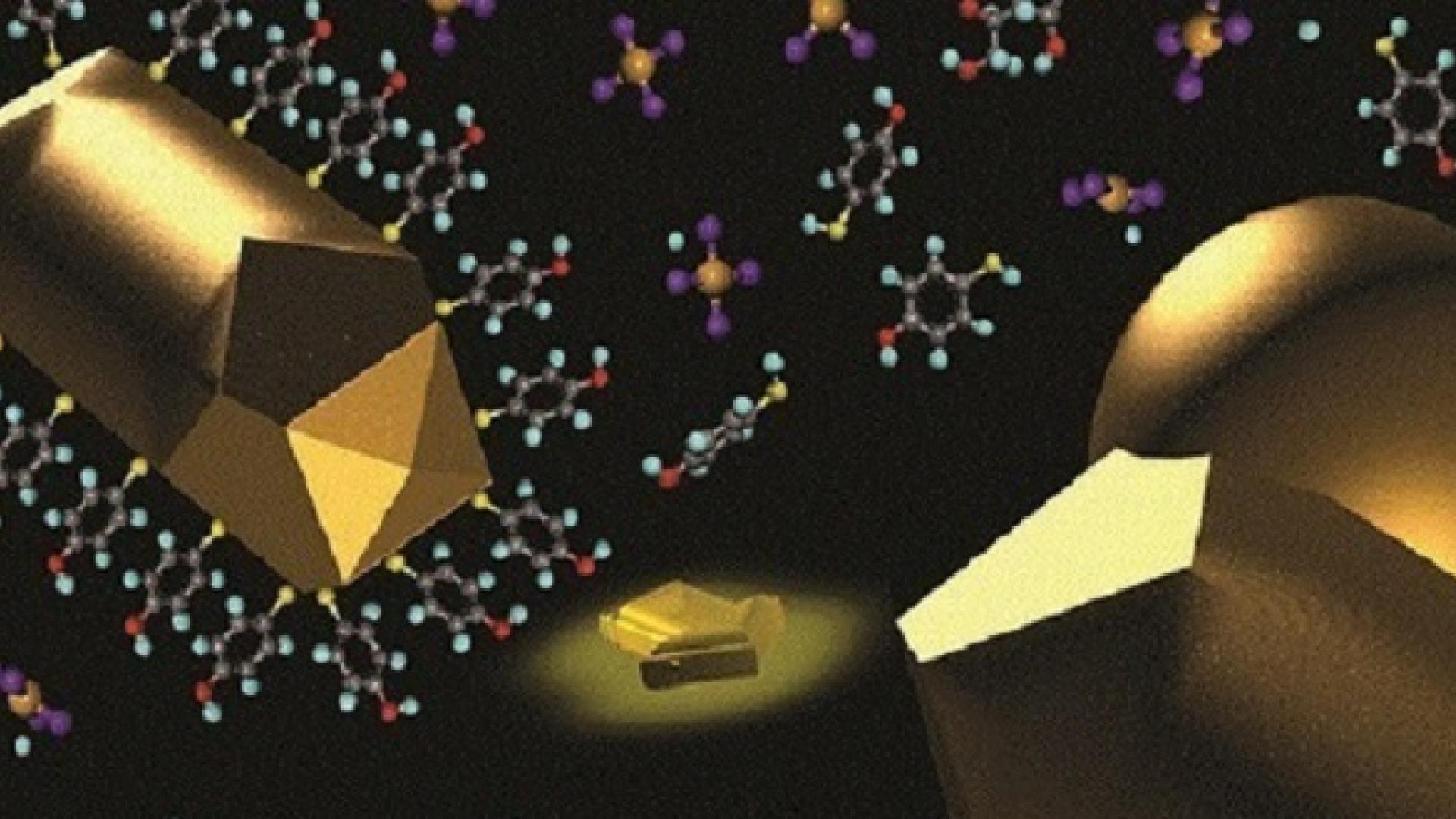© 2016 KAUST
Tailored asymmetric nanoparticles are about to become easier to produce following a major breakthrough by KAUST researchers. The researchers studied the growth mechanism to expose the role of thiols, a key type of ligand.
Asymmetry is expected to give rise to unique electronic and optical properties that are helpful for nanotechnologies such as ultrafast information transfer and sensing. However, asymmetry has shortcomings when it comes to synthesis.
Approaches using particles as seeds have led to bimetallic nanostructures such as gold–silver and palladium–gold crystals. However, asymmetric gold–gold and gold–silver dimers are difficult to obtain because their components present little or no crystal lattice mismatch, a main driving force for dimer formation.
Thiol ligands promote the seeded growth of well-defined asymmetric particles, but to date this contribution has been obscured by the poor quality of the seed nanoparticle crystals.
“This prevents a reliable analysis which is crucial for unraveling the role of thiols,” said team leader Yu Han from the KAUST Advanced Membranes & Porous Materials Center.
Read the full article
